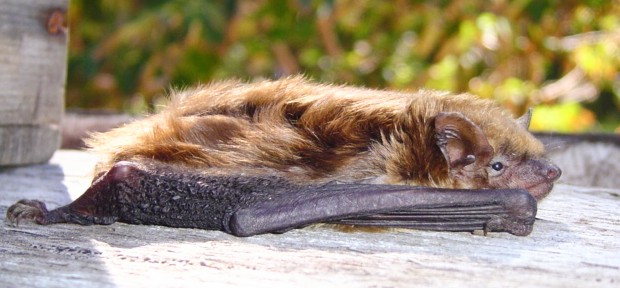You may have heard that bat guano is a good fertilizer for plants. While it is true that guano can benefit plants as an organic fertilizer, trying to collect it yourself can be dangerous. Guano can also harbor pathogens and attempts to harvest it yourself could expose you to disease. Furthermore, in attempting to collect the guano, you could disturb the bats themselves, which could be dangerous for you and is also illegal. If you have bats on your property, you should call for professional bat removal, which also includes clean-up of areas contaminated by guano.
What Is Guano?
Guano is another term for the bats’ excrement or feces. The name has roots in the region of the Andes Mountains in South America, where it comes from an Indigenous language.
Bat guano resembles a collection of elongated pellets that are dark-colored. The pellets may be somewhat glittery in appearance because they contain the undigested remains of insects’ exoskeletons, which may be iridescent in appearance. Guano is dry and tends to crumble with the slightest touch, but it is inadvisable to touch it at all.
How Can Bat Guano Be Beneficial?
Guano contains nutrients that plants need to grow. The most important of these are nitrogen, phosphorus, and potassium, often abbreviated as NPK. Guano is an organic source of these nutrients that gardeners sometimes turn to as an alternative to chemical fertilizers. It also contains other helpful nutrients. These include sulfur, which helps plants to produce chlorophyll, the chemical that makes them green and allows them to perform photosynthesis, as well as calcium, which supports the plants’ cell structure.
Bats that eat fruit may spread the seeds through their excrement, which is another way that guano can benefit plants.
What Are the Risks of Guano?
Professionally collected, processed, and packaged guano sold for the purpose of fertilizing lawns and gardens is safe to use as long as you follow the directions provided. However, you shouldn’t try to collect your own guano, nor should you try to clean up excrement yourself if you have bats on your property. After it has sat and collected for a while, it can start to grow a fungus called Histoplasma capsulatum. If inhaled, the spores of this fungus can cause a disease called histoplasmosis.
Symptoms of histoplasmosis include the following:
- Body aches
- Congestion
- Chest pain
- Fatigue
- Fever
- Headache
- Impaired vision
- Shortness of breath
People who smoke or are immunocompromised are at greater risk for severe illness. Histoplasmosis may be treatable with antifungal medications, but it can also cause complications, such as inflammation of the membranes surrounding your brain and spinal cord (meningitis) or the sac surrounding your heart (pericarditis).
Before bat guano can be cleaned up, it has to be disinfected. Attempting to simply sweep up or vacuum the guano may send the spores airborne, where they can more easily be inhaled. Another risk of attempting to clean up or collect bat guano yourself is that it might disturb the bats. Bats are generally not aggressive, but they may bite if they feel threatened and they can carry diseases such as rabies that they could spread through their bites.
Why Should You Call Skedaddle for Bat Removal?
Part of our process involves cleaning and decontaminating the accumulated guano in a way that avoids exposing you or your family to any pathogens. Our humane process avoids harming the bats and their offspring and complies with federal laws protecting these vulnerable species. It is only before the babies are born or after they are old enough to survive without their mother that we can install one-way doors that allow bats to fly out but prevent them from coming back in. Our technicians can assess what breeding phase the bats are in and formulate a plan based on that.
Bat removal is only one of many services related to wildlife control in Madison that we perform. Find out more about how we can help with wild animals on your property.



